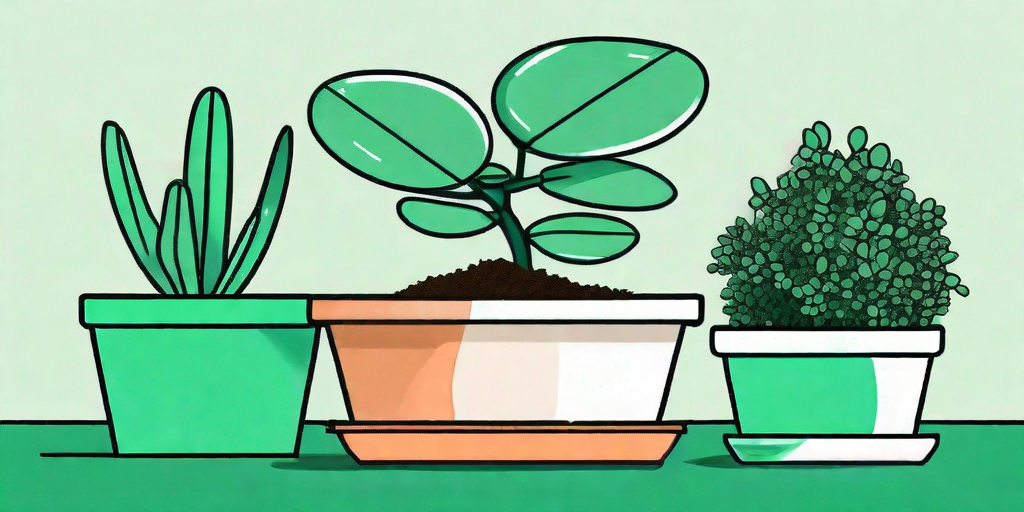
Ah, the jade plant. It's a resilient little fellow, isn't it? Known for its thick, lush leaves and its ability to survive in less-than-ideal conditions, it's a favorite among both novice and seasoned gardeners. But what happens when your jade plant starts to look a bit...well, less than lively? Fear not! This guide will walk you through the process of reviving your jade plant by repotting it. So, roll up your sleeves and let's get to work!
Understanding Your Jade Plant
Before we dive into the repotting process, it's important to understand a bit about the jade plant itself. Native to South Africa, the jade plant, or Crassula ovata, is a succulent that's known for its ability to store water in its thick, fleshy leaves. This makes it a hardy plant that can withstand a bit of neglect. However, even the hardiest of plants can start to wilt if they're not given the proper care.
One common problem that jade plant owners face is overwatering. Because jade plants are succulents, they don't need as much water as other houseplants. Overwatering can lead to root rot, which can cause the plant to wilt and eventually die. If your jade plant is looking a bit worse for wear, overwatering could be the culprit.
Signs of an Overwatered Jade Plant
So, how can you tell if you've overwatered your jade plant? One of the first signs is yellowing leaves. If the leaves of your jade plant are turning yellow and falling off, it's a sign that the plant is getting too much water. Other signs of overwatering include soft, mushy leaves and a weak or rotting stem.
If you notice any of these signs, it's time to take action. The first step is to stop watering the plant. Then, it's time to repot.
Repotting Your Jade Plant
Repotting a jade plant might sound like a daunting task, but it's actually quite simple. All you need is a new pot, some fresh potting soil, and a bit of patience. Here's a step-by-step guide to repotting your jade plant.
Step 1: Remove the Jade Plant from Its Current Pot
First, carefully remove the jade plant from its current pot. Be gentle! You don't want to damage the roots any more than they already are. If the plant is stuck, you can use a knife to loosen the soil around the edges of the pot.
Once the plant is out of the pot, inspect the roots. If you see any that are black or mushy, trim them off with a clean pair of scissors. This will help prevent the rot from spreading to the rest of the plant.
Step 2: Prepare the New Pot
Next, it's time to prepare the new pot. Make sure it's clean and has good drainage. If it doesn't have a hole in the bottom, you can drill one yourself. This will help prevent water from sitting in the bottom of the pot and causing root rot.
Fill the pot about one-third of the way full with fresh potting soil. For jade plants, it's best to use a soil mix that's designed for succulents and cacti. These mixes drain well and provide the right nutrients for your jade plant.
Step 3: Repot the Jade Plant
Now, it's time to repot the jade plant. Place the plant in the new pot, making sure it's centered. Then, fill in around the plant with more potting soil. Be sure not to pack the soil too tightly – you want it to be loose enough for water to drain through.
Once the plant is repotted, give it a good watering. Then, place it in a sunny spot and wait. It might take a few weeks for your jade plant to bounce back, but with a bit of patience, it should start to perk up.
FAQs
How often should I water my jade plant?
Jade plants don't need a lot of water. In fact, it's better to underwater than overwater. As a general rule, you should water your jade plant once the top inch of soil is dry. In the summer, this might be once a week. In the winter, it might be once a month.
What kind of light does a jade plant need?
Jade plants love light! They do best in a sunny spot with at least four hours of direct sunlight each day. However, they can also tolerate indirect light.
Why are the leaves on my jade plant falling off?
If the leaves on your jade plant are falling off, it could be a sign of overwatering. Other signs of overwatering include yellowing leaves and a weak or rotting stem. If you notice any of these signs, stop watering and repot your plant.
Conclusion
Reviving a jade plant might seem like a daunting task, but with a bit of patience and the right care, it's entirely possible. Remember, the key is to avoid overwatering and to repot the plant if it's showing signs of distress. With a bit of luck, your jade plant will be back to its lush, green self in no time.
So, there you have it – a step-by-step guide to reviving your jade plant. Now, go forth and garden with confidence!















